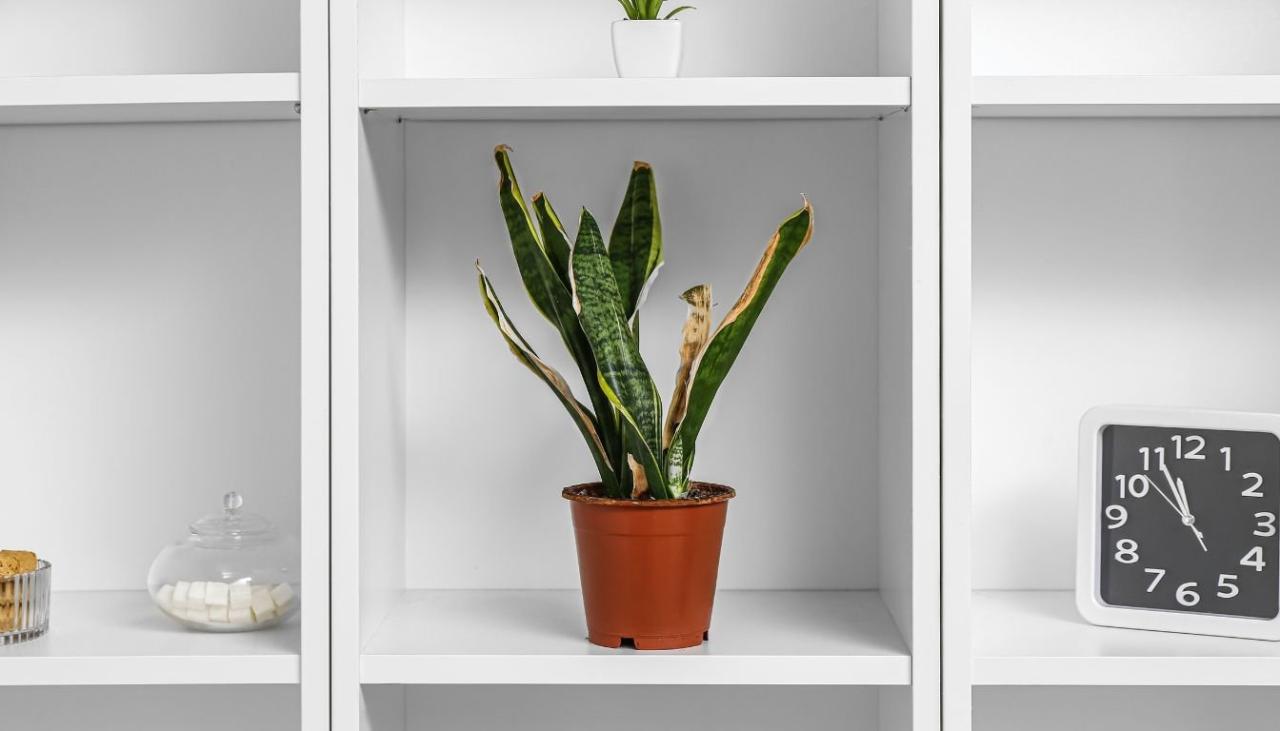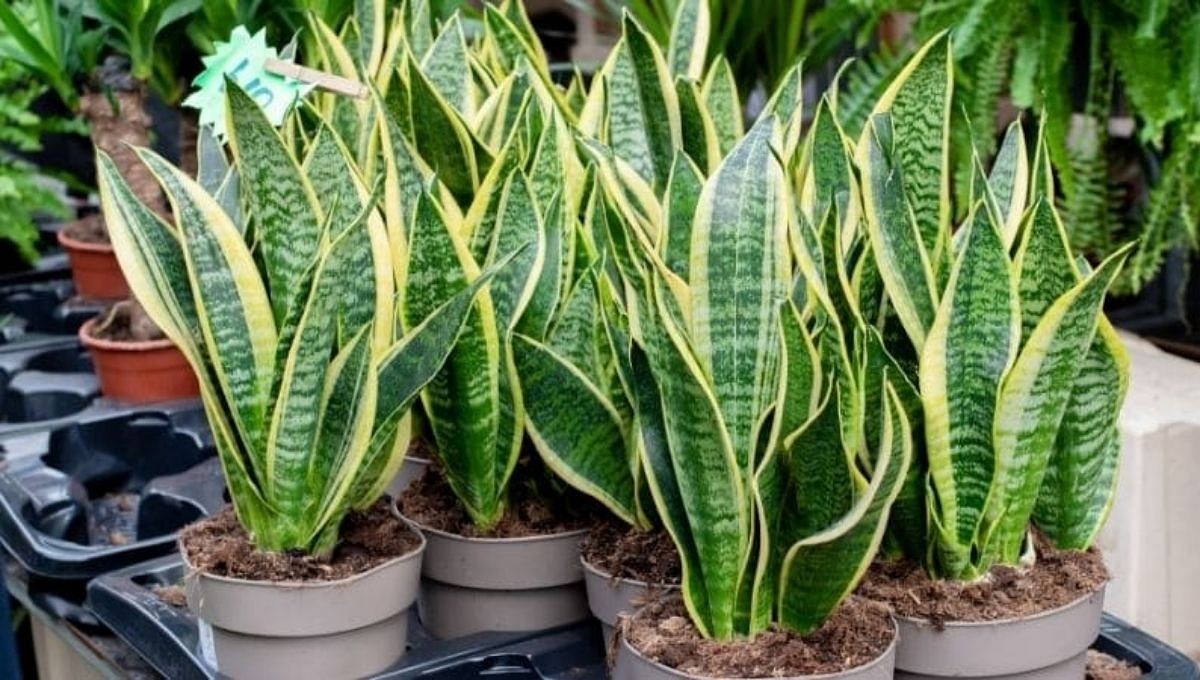How Much Water Does a Snake Plant Need in Low Light? This resilient houseplant, known for its striking vertical foliage, is a popular choice for low-light homes. But how much water does it actually need when light is limited?
Understanding the snake plant’s water requirements in low light conditions is crucial for its health and vitality.
Native to arid regions of Africa, the snake plant, or Sansevieria trifasciata, has evolved to thrive in harsh conditions. Its thick, fleshy leaves act as water reservoirs, allowing it to endure long periods of drought. This adaptation makes it an ideal plant for those who may forget to water regularly or who live in environments with limited sunlight.
Snake Plant Basics

The snake plant, also known asSansevieria trifasciata*, is a popular houseplant due to its hardiness and adaptability. These resilient plants thrive in various environments, including low-light conditions, making them ideal for homes and offices.
Natural Habitat and Adaptation to Low Light
Native to tropical and subtropical regions of Africa, snake plants have evolved to tolerate harsh environments with limited sunlight. They can survive in dry, rocky, and even desert-like conditions. Their ability to thrive in low light stems from their unique photosynthetic process known as Crassulacean Acid Metabolism (CAM).
Unlike most plants that absorb carbon dioxide during the day, snake plants open their stomata (pores) at night to absorb carbon dioxide and store it as malic acid. During the day, they use this stored carbon dioxide to perform photosynthesis, even with minimal light.
This adaptation allows them to conserve water and grow effectively in low-light environments.
Water Requirements
Snake plants are remarkably drought-tolerant and can survive long periods without water. They prefer to be slightly dry between waterings, as overwatering can lead to root rot. The frequency and amount of water needed vary depending on factors such as the size of the plant, the type of potting mix, and the ambient temperature and humidity.
Snake Plant Root System
Snake plants possess a thick, fibrous root system that allows them to store water and nutrients. The roots are typically fleshy and spread out horizontally, enabling them to absorb water efficiently from the surrounding soil. This ability to store water makes them highly adaptable to infrequent watering schedules.
Low Light Environments and Water Needs

Snake plants are known for their resilience and ability to thrive in low light conditions. However, it’s important to understand how low light affects their water requirements to ensure their well-being.Low light conditions significantly impact the snake plant’s growth rate and water needs.
Just like a snake plant, a bonsai tree thrives in the right environment. Understanding how much water a snake plant needs in low light is similar to knowing how to choose a bonsai pot that suits your tree’s needs. Choosing the right pot for your bonsai, as explained in this helpful guide How to Choose a Bonsai Pot That Suits Your Tree’s Needs , can significantly impact its health and growth.
Both snake plants and bonsai require careful attention to their environment to flourish.
In low light, photosynthesis slows down, reducing the plant’s ability to absorb water and nutrients. This slower growth rate also translates to a decreased need for water.
Water Needs in Low Light vs. Bright Light, How Much Water Does a Snake Plant Need in Low Light?
The water needs of a snake plant in low light are significantly less compared to those in bright light. In bright light, the plant actively photosynthesizes, requiring more water to support its growth. However, in low light, the plant’s metabolic processes slow down, resulting in a reduced need for water.
Signs of Underwatering and Overwatering in Low Light
It’s crucial to recognize the signs of underwatering and overwatering in a snake plant, especially in low light conditions. These signs can be subtle, but understanding them can help you maintain your plant’s health.Here’s a table highlighting the differences in signs of underwatering and overwatering in low light conditions:| Sign | Underwatering | Overwatering ||—|—|—|| Leaves| Wilted, drooping, and soft | Yellowing, brown spots, mushy, and root rot || Soil| Dry to the touch | Soggy and constantly damp || Growth| Stunted growth | Slow growth, wilting, and leaf drop || Frequency| More frequent in bright light | Less frequent in low light |
It’s essential to remember that the signs of underwatering and overwatering can vary depending on the severity and duration of the issue. It’s crucial to address these signs promptly to prevent further damage to your snake plant.
Signs of Proper Hydration
A healthy snake plant in low light conditions will exhibit specific characteristics that indicate its well-being. By understanding these signs, you can ensure your plant is thriving and receiving the right amount of water.
Appearance of a Healthy Snake Plant
A healthy snake plant in low light will retain its vibrant color, firm texture, and upright growth habit.
While snake plants are known for their resilience in low light, they still require proper watering to thrive. The key is to let the soil dry out completely between waterings, as overwatering is a common cause of root rot. To learn more about how often to water your snake plant to avoid this issue, check out our comprehensive guide on How Often Should You Water Snake Plants to Avoid Root Rot?
. By understanding the proper watering frequency, you can ensure your snake plant remains healthy and vibrant even in low light conditions.
- Leaf Color:The leaves will maintain their characteristic green color, with no signs of yellowing or browning. Some varieties may exhibit stripes or variegation, which should remain clear and distinct.
- Leaf Texture:The leaves will feel firm and rigid to the touch, with no signs of wilting or drooping. The tips of the leaves will be sharp and pointed, indicating good health.
- Growth:A healthy snake plant will continue to produce new leaves, even in low light conditions. The new growth will be robust and upright, indicating that the plant is receiving the necessary nutrients and water.
Identifying Signs of Adequate Hydration
- Plump Leaves:When properly hydrated, the leaves of a snake plant will feel plump and firm to the touch. This indicates that the plant is holding onto moisture and is not dehydrated.
- Firm Soil:The soil should feel slightly moist to the touch, but not soggy. This indicates that the plant has absorbed the water it needs, and the soil is not waterlogged.
Visual Guide: Hydrated vs. Dehydrated Snake Plant
Imagine two snake plants side-by-side. The first plant is healthy and hydrated, exhibiting all the signs mentioned above. Its leaves are a vibrant green, firm to the touch, and stand upright. The soil feels slightly moist. The second plant, on the other hand, is dehydrated.
Its leaves are dull and yellowing, with drooping tips. The soil feels dry and crumbly. This visual comparison clearly illustrates the difference between a properly hydrated and a dehydrated snake plant.
Conclusion

By understanding the snake plant’s unique water needs in low light conditions, you can ensure its continued growth and beauty. Remember, patience and observation are key. Monitor your snake plant’s soil moisture, leaf appearance, and growth rate to determine the perfect watering schedule for your specific environment.
With a little care, your snake plant will thrive, adding a touch of green and vitality to your home.
FAQ Resource: How Much Water Does A Snake Plant Need In Low Light?
What are the signs of overwatering a snake plant in low light?
Overwatering in low light can lead to yellowing leaves, mushy stems, and a foul odor from the soil. The plant may also start to droop or wilt, even though it’s receiving water.
Can I use tap water to water my snake plant?
While tap water is generally safe, it’s best to use filtered or distilled water, especially if your tap water has high mineral content. These minerals can build up in the soil and potentially harm the plant.
How often should I fertilize my snake plant in low light?
Snake plants don’t require frequent fertilization. You can fertilize once or twice during the growing season (spring and summer) with a balanced liquid fertilizer diluted to half strength.
What are the best types of soil for snake plants in low light?
A well-draining potting mix is essential. You can use a cactus or succulent mix, or a general potting mix amended with perlite or pumice to improve drainage.
